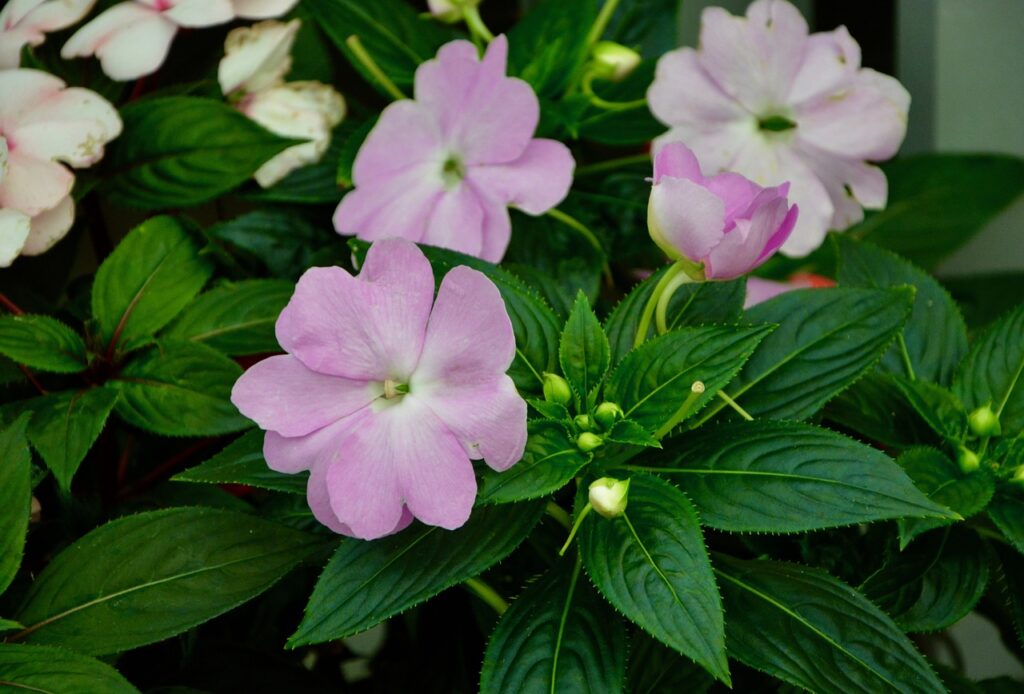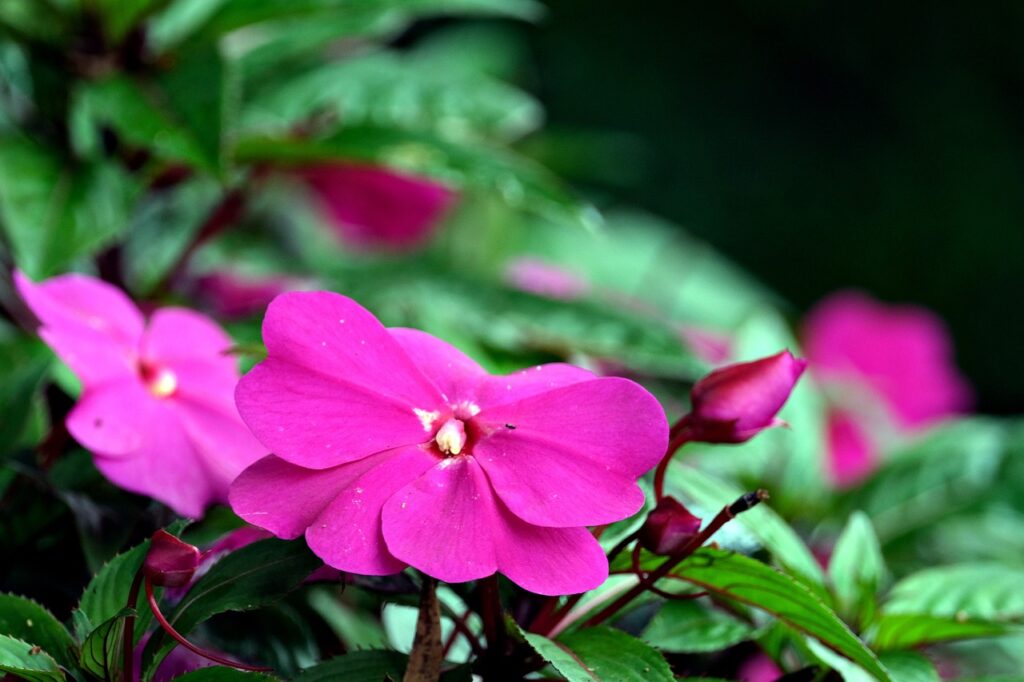Impatiens | A Gentle Touch of Color in the Quiet Shade

Impatiens are beloved among gardening enthusiasts for their vivid blossoms and long flowering period. They thrive even in shaded areas, adding vibrant colors to gardens and pots alike.
In this article, I will explain in detail the basic information about impatiens, their cultural background, and tips for successful cultivation.
Basic Information
- Scientific name: Impatiens walleriana
- Family: Balsaminaceae
- Origin: East Africa, South Asia
- Appearance: Impatiens produce clusters of small blossoms in a wide variety of colors such as red, pink, white, orange, and purple. Their height ranges from 15 to 60 cm depending on the variety. The foliage varies from solid green to variegated types. Known for their brilliant hues, impatiens bloom beautifully in semi-shade to full shade, making them suitable for many spots in the garden.
- Flowering season: From spring through autumn, they bloom continuously, allowing enjoyment throughout the growing season.
Cultural Significance Worldwide

Impatiens carry symbolic meanings such as “patience” and “innocence.” This symbolism comes from their long-lasting blooms and their unique seed pods, which burst open when touched—hence the association with “impatience.”
In the United States, they are commonly called “busy Lizzie” and are widely planted in gardens and hanging baskets. In India, they are sometimes used in Buddhist rituals and festivals.
Because they bloom well even in shaded places, impatiens are also loved in urban plantings and public parks where sunlight is limited.
Historical Background
The name Impatiens derives from the Latin word meaning “impatient,” referring to the way their seed pods explosively burst when ripe. This fascinating seed dispersal mechanism has long captured the interest of gardening enthusiasts.
Introduced from East Africa to Europe in the 18th century, impatiens quickly spread and gained popularity as ornamental plants worldwide. Today, many hybrid varieties exist, offering a wide range of colors and forms.
Gardening Advice

Cultivation Guide
Impatiens thrive in partial to full shade, making them ideal for places with limited sunlight. It is important to keep the soil consistently moist while avoiding excessive dryness.
Water thoroughly when the soil surface becomes dry, especially during hot summer months. Deadheading faded flowers encourages continuous blooming. Since impatiens are sensitive to cold, I recommend bringing them indoors in autumn.
Growing Tips
Impatiens prefer soil that drains well while retaining some moisture. For potted plants, using pumice stones or drainage nets helps prevent root rot. Applying fertilizer once a month during the growing season will promote abundant flowering.
In warm climates, impatiens can be enjoyed year-round, but in frost-prone regions, they should be cultivated from spring to autumn.
Conclusion
Impatiens are charming flowers, admired for their brilliant colors and extended blooming season. They grow well even in shaded, humid areas, making them easy to incorporate into any garden and suitable for beginners.
I encourage you to grow impatiens and bring a lively splash of color to your garden or balcony.
